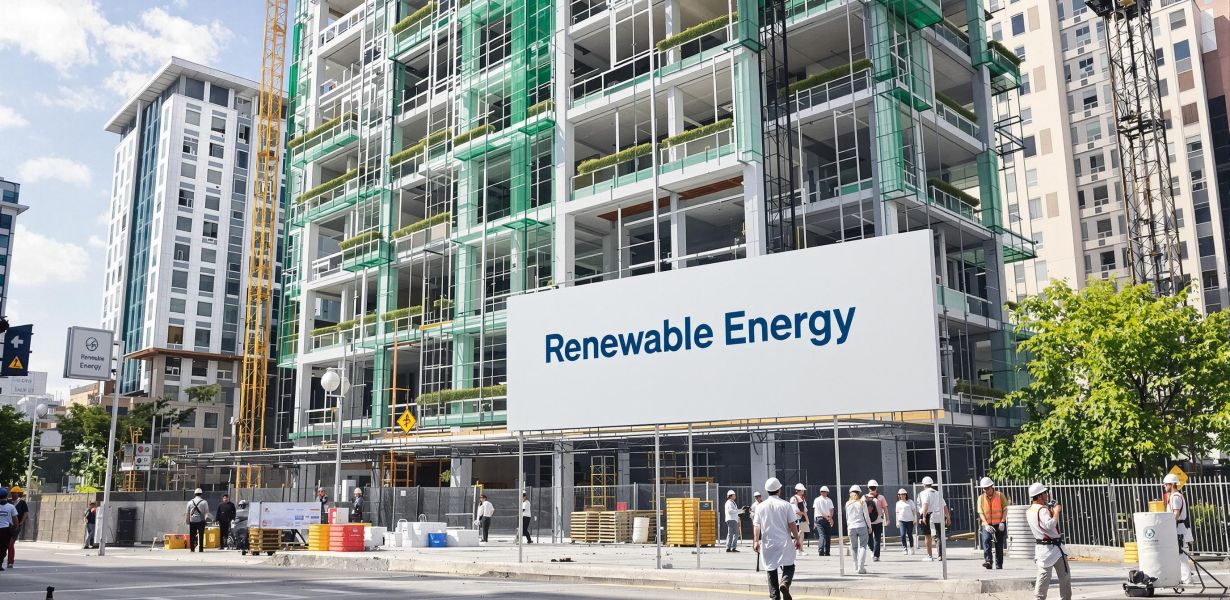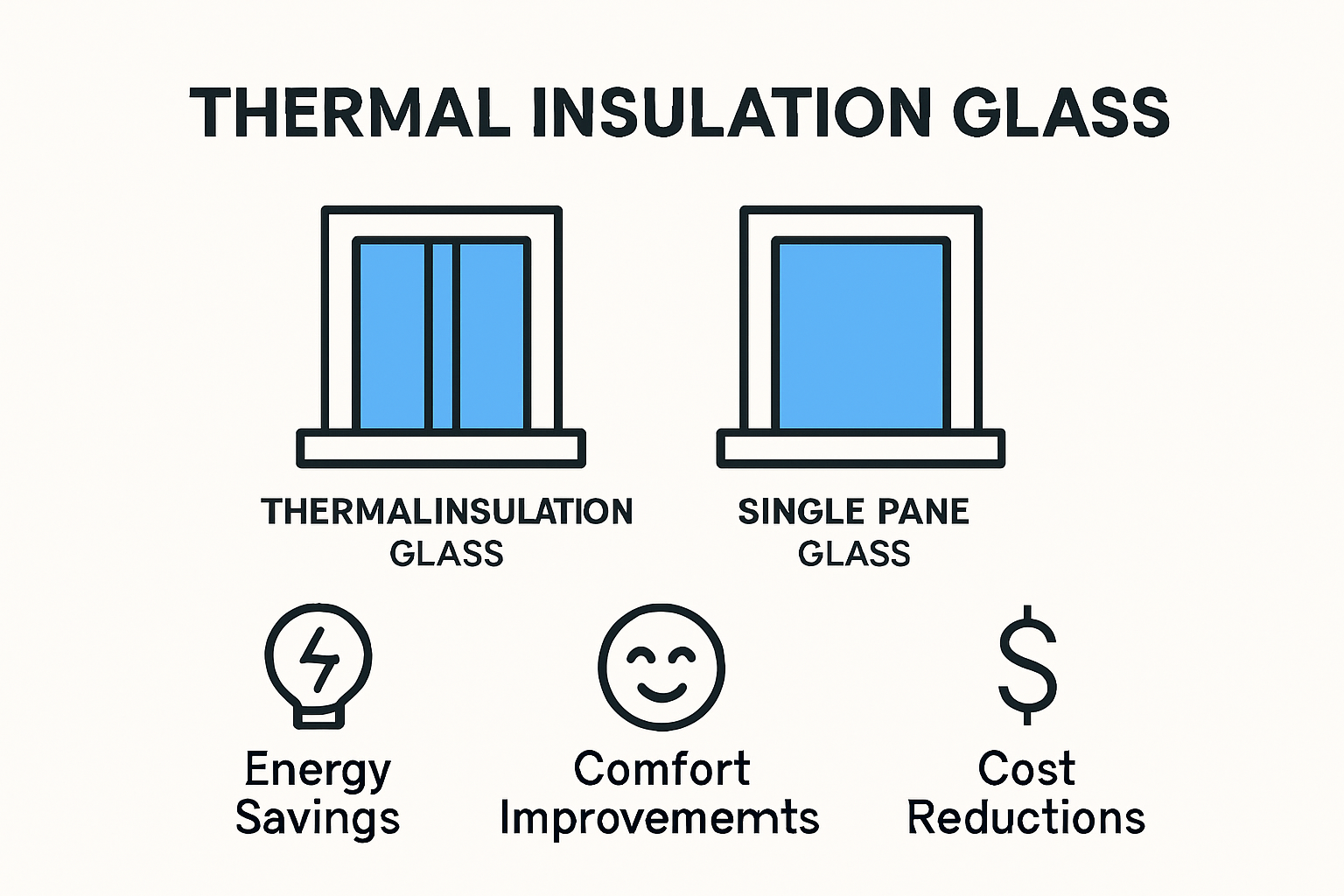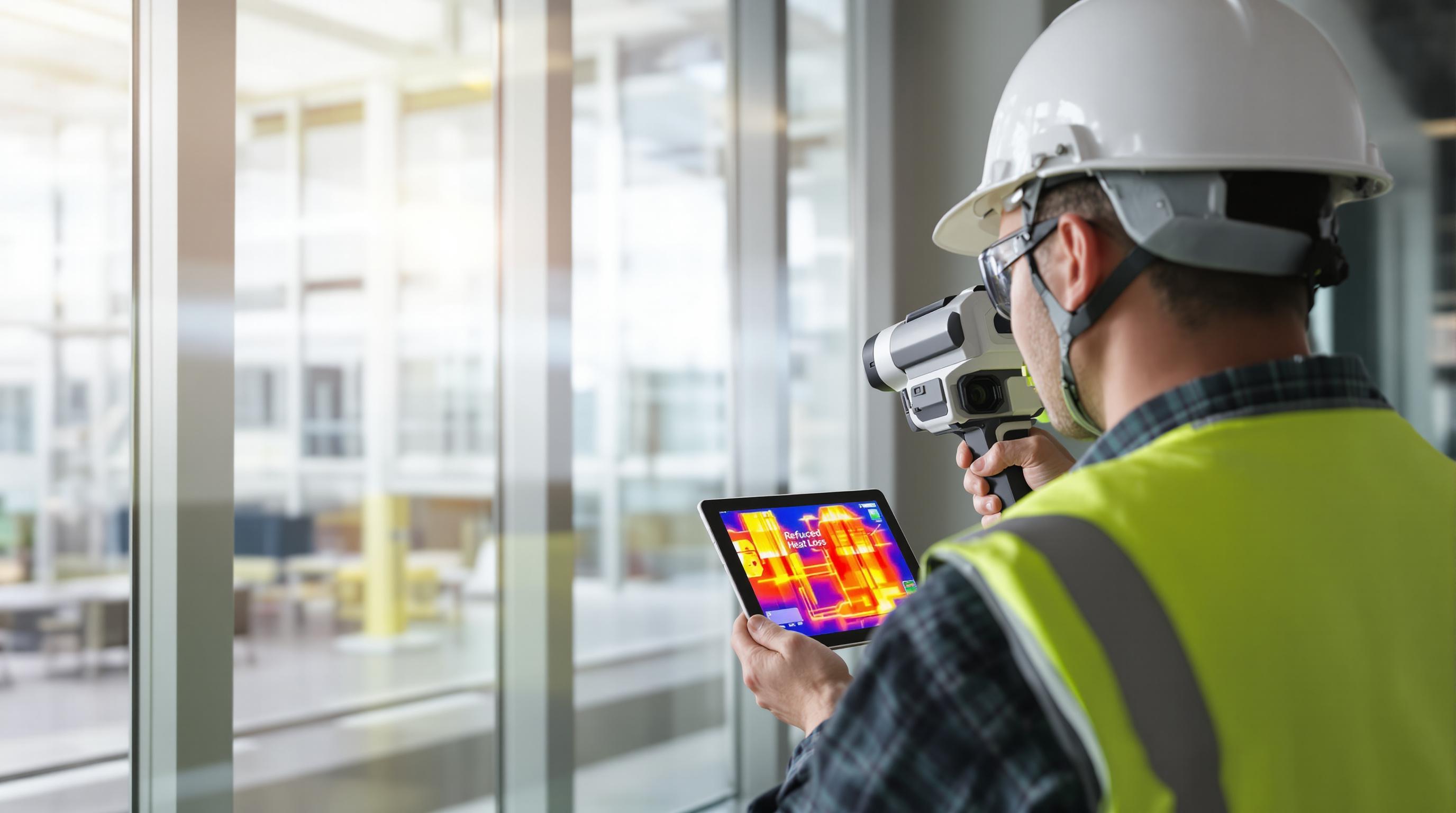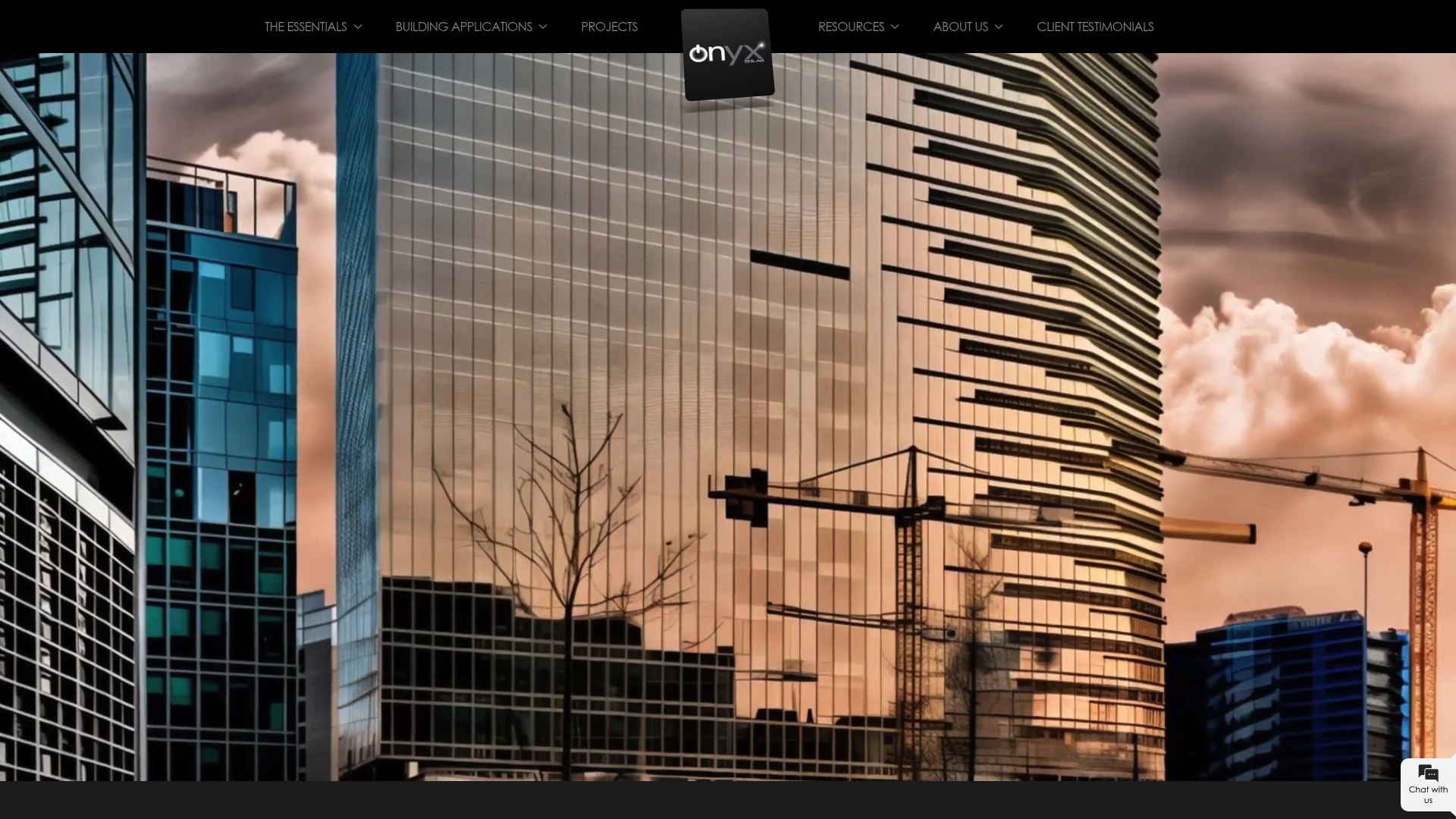
July 15, 2025
Onyx Solar USA
79 Madison Avenue, Ste. #231
New York, NY 10016
usa@onyxsolar.com
+1 917 261 4783
Onyx Solar Spain
Calle Río Cea 1, 46,
05004 Ávila. Spain.
info@onyxsolar.com
+34 920 21 00 50

Thermal insulation glass is shaking up the construction world. Some of the latest options can cut building energy use by up to 40 percent, slashing heating and cooling costs like never before. Surprised? Many people still think of windows as weak spots for energy loss and drafty rooms. Turns out, the smartest glass technologies in 2025 are now making windows one of the strongest defenses in eco-friendly and cost-saving building design.
| Takeaway | Explanation |
|---|---|
| Energy Efficiency | Thermal insulation glass can cut energy consumption by up to 40%, significantly lowering heating and cooling costs through advanced technologies like low-E coatings and gas-filled spaces between panes. |
| Enhanced Comfort | This glass minimizes indoor temperature fluctuations and drafts, improving occupant comfort and reducing HVAC strain throughout the year. |
| Long-Term Economic Benefits | Investing in thermal insulation glass can lead to up to 30% reductions in operational energy expenses, making it a financially sound choice for building design. |
| Innovative Technologies | Advanced options like electrochromic glass and vacuum insulation glazing offer dynamic response and exceptional thermal performance, enhancing building sustainability. |
| Sustainability Certification | Incorporating thermal insulation glass supports meeting standards for green certifications like LEED and BREEAM, enhancing property values and attracting environmentally conscious tenants. |

Thermal insulation glass represents a transformative solution for modern building design, offering architects and developers a sophisticated approach to enhancing building performance and sustainability. These advanced glazing technologies go far beyond traditional glass applications, providing comprehensive benefits that address critical challenges in energy efficiency, occupant comfort, and environmental responsibility.
At the core of thermal insulation glass technology lies its exceptional ability to minimize heat transfer between interior and exterior environments. By utilizing specialized coatings and multiple glazing layers, these innovative glass solutions dramatically reduce thermal conductivity. Learn more about our advanced glass technologies that can cut energy consumption by up to 40% compared to standard single-pane windows.
According to research from the National Renewable Energy Laboratory, advanced thermal insulation glass can significantly lower heating and cooling costs. The key mechanisms include low-emissivity (low-E) coatings that reflect infrared radiation, gas-filled spaces between glass panes that provide additional insulation, and advanced frame technologies that minimize thermal bridging.

Beyond energy savings, thermal insulation glass delivers remarkable improvements in indoor environmental quality. By maintaining more consistent interior temperatures and reducing drafts, these glass solutions create a more comfortable living and working environment. Saint Gobain Glass Research highlights that thermal insulation glass helps mitigate temperature fluctuations, reducing the strain on HVAC systems and creating a more stable indoor climate.
The advanced engineering of thermal insulation glass addresses multiple environmental challenges. Its sophisticated design minimizes condensation, prevents heat gain during summer, and reduces heat loss during winter. This dynamic performance ensures year-round comfort while supporting sustainable building practices.
Investing in thermal insulation glass represents a strategic approach to building design that delivers substantial long-term advantages. The initial higher investment is quickly offset by significant energy cost reductions and improved building performance. According to the American Institute of Architects, buildings incorporating advanced thermal insulation technologies can achieve up to 30% reduction in operational energy expenses.
Moreover, these glass solutions contribute directly to reducing carbon emissions and supporting global sustainability goals. By minimizing energy consumption and enhancing building efficiency, thermal insulation glass plays a crucial role in creating more environmentally responsible architectural solutions. Architects and developers can leverage this technology to meet increasingly stringent green building standards and certification requirements.
Thermal insulation glass is not just a product but a comprehensive approach to reimagining building envelope performance. Its multifaceted benefits demonstrate how advanced materials can transform our built environment, creating spaces that are more energy-efficient, comfortable, and environmentally conscious.
To help clarify the various benefits of thermal insulation glass discussed above, the following table summarizes major performance advantages and their corresponding impacts:
| Benefit | Description | Impact |
|---|---|---|
| Energy Savings | Advanced coatings and multi-layer design reduce heat transfer | Up to 40% less energy consumption |
| Enhanced Comfort | Maintains stable indoor temperatures and minimizes drafts | Improved occupant comfort, less HVAC strain |
| Environmental Control | Reduces condensation and thermal fluctuation | Year-round indoor environmental stability |
| Economic Efficiency | Lower energy bills despite higher initial costs | Up to 30% reduction in operational expenses |
| Carbon Emissions Reduction | Efficient energy use and insulation reduce emissions | Supports meeting sustainability goals |
The thermal insulation glass market in 2025 presents a dynamic landscape of innovative technologies designed to transform building performance and sustainability. Architects and developers now have access to sophisticated glazing solutions that push the boundaries of energy efficiency, environmental control, and architectural design.
Modern thermal insulation glass technologies leverage sophisticated engineering techniques to optimize thermal performance. Low-emissivity (low-E) coatings represent a cornerstone of these advancements, utilizing microscopic metallic layers that selectively reflect infrared radiation. Explore our advanced glass solutions that demonstrate remarkable thermal management capabilities.
According to research from the National Renewable Energy Laboratory, multi-layer glazing systems with specialized gas fills like argon or krypton can dramatically reduce heat transfer. These advanced configurations typically feature two or three glass panes separated by inert gas layers, creating an exceptional thermal barrier that minimizes energy loss.
Emergent technologies are revolutionizing thermal insulation glass with intelligent, adaptive capabilities. Electrochromic glass represents a prime example, utilizing advanced electrical technologies to dynamically adjust its tint and thermal properties. Research published in Materials indicates that electrochromic systems can reduce solar heat gain by up to 60%, offering unprecedented environmental control.
Vacuum Insulated Glazing (VIG) technology pushes thermal performance boundaries even further. By creating a near-perfect vacuum between glass panes, these systems achieve extraordinary thermal transmittance levels around 0.5 W/m²·K. Springer Research highlights VIG’s potential to outperform traditional multi-layer glazing systems in thermal insulation.
Cutting-edge thermal insulation glass technologies are increasingly incorporating advanced materials to enhance performance. Aerogel-integrated glazing represents a breakthrough, combining silica aerogel’s exceptional insulative properties with transparent glass substrates. Climate-focused research demonstrates that aerogel windows can reduce heating requirements by up to 15.5% compared to conventional double-glazed systems.
These emerging technologies reflect a comprehensive approach to thermal management, integrating sophisticated materials science, advanced manufacturing techniques, and sustainable design principles. By continuously pushing technological boundaries, thermal insulation glass is transforming from a passive building component to an active, intelligent system that dynamically responds to environmental conditions.
The 2025 thermal insulation glass market represents a convergence of engineering excellence, environmental responsibility, and architectural innovation. Architects and developers now have unprecedented opportunities to create buildings that are not just energy-efficient, but fundamentally intelligent in their environmental interactions.
To provide a clear overview, the following comparison table outlines the main types of thermal insulation glass technologies available in 2025, along with their unique features and performance highlights:
| Technology | Key Feature | Performance/Impact |
|---|---|---|
| Low-E Coated Glazing | Microscopic metallic IR-reflection layer | Cuts energy use up to 40% |
| Gas-Filled Multi-Layer | Argon/Krypton between panes | U-value to ~1.1 W/m²·K |
| Electrochromic (Smart) | Dynamic tint, solar heat modulation | Reduces solar heat gain up to 60% |
| Vacuum Insulated Glazing | Vacuum-sealed gap between panes | Thermal transmittance ~0.5 W/m²·K |
| Aerogel-Integrated Glazing | Silica aerogel for superior insulation | Heating needs reduced by up to 15.5% |
Designing commercial buildings with thermal insulation glass requires a comprehensive approach that balances architectural aesthetics, energy performance, economic feasibility, and environmental sustainability. In 2025, architects and developers must navigate complex considerations to optimize building envelope performance and create intelligent, responsive architectural solutions.
The primary design consideration for thermal insulation glass in commercial buildings centers on maximizing energy efficiency. Explore sustainable design strategies that integrate advanced glazing technologies to reduce overall energy consumption. According to research from Cambridge University, implementing double-glazed windows with low-emissivity coatings and argon gas filling can reduce the U-value to approximately 1.1 W/m²·K, significantly enhancing thermal insulation.
Commercial building designers must carefully evaluate multiple factors including solar heat gain coefficient, visible light transmission, and thermal conductivity. Springer Research demonstrates that aerogel-filled glazing systems can lower solar heat gain by up to 73% and reduce cooling loads by up to 33% in hot-dry climates, offering substantial energy management advantages.
Thermal insulation glass technologies must seamlessly integrate with broader architectural design principles. Modern commercial buildings demand solutions that are not just functionally efficient but also visually compelling. Advanced glazing technologies now offer unprecedented design flexibility, allowing architects to create dynamic facades that balance transparency, thermal performance, and aesthetic expression.
Electrochromic and smart glass technologies enable architects to design facades that dynamically respond to environmental conditions. These adaptive systems can automatically adjust tint and transparency, providing optimal indoor comfort while maintaining visual connectivity with exterior environments. The ability to modulate solar transmission and thermal properties represents a significant advancement in architectural design strategies.
Economic feasibility remains a critical factor in selecting thermal insulation glass technologies for commercial buildings. While advanced solutions may present higher initial investments, their long-term performance benefits can generate substantial returns. Vacuum glazing technologies achieving thermal transmittance levels around 0.5 W/m²·K offer superior insulation performance, potentially reducing operational energy costs by significant margins.
Sustainability certifications like LEED and BREEAM increasingly prioritize advanced thermal management strategies. Commercial developers must consider how thermal insulation glass contributes to overall building performance metrics, carbon footprint reduction, and environmental compliance. The most advanced solutions integrate passive and active solar management techniques, transforming building envelopes from static barriers into dynamic energy management systems.
Designing commercial buildings with thermal insulation glass in 2025 demands a holistic approach that synthesizes technological innovation, architectural creativity, and environmental responsibility. By carefully balancing performance, aesthetics, and economic considerations, architects and developers can create buildings that are not just structures, but intelligent, responsive environmental interfaces.
Thermal insulation glass represents a transformative solution for developers seeking to balance environmental responsibility with economic pragmatism. By integrating advanced glazing technologies, construction projects can simultaneously reduce carbon footprints and generate substantial long-term financial benefits.
Explore renewable energy strategies that leverage thermal insulation technologies to optimize building performance. According to research published in Sustainability, replacing single-glazed windows with double-glazed units can achieve energy savings ranging from 39% to 53% in commercial buildings. These significant reductions translate directly into lower operational expenses and improved financial sustainability.
A compelling case study from China North Glass Research demonstrates the tangible economic advantages. In a 50,000m² office building project, integrating insulating glass resulted in a remarkable 30% reduction in energy bills. This substantial cost saving underscores the financial viability of investing in advanced thermal insulation technologies.
Cutting-edge coating technologies are revolutionizing thermal insulation glass’s sustainability potential. Research from Rice University developed a groundbreaking transparent, weatherproof coating that reflects heat and resists environmental degradation. Simulations indicate that applying this innovative coating to windows in cities with cold winters could improve energy savings by 2.9% compared to existing alternatives.
These advanced coatings represent more than incremental improvements. They signify a paradigm shift in how developers can approach building envelope design, transforming windows from passive architectural elements into active energy management systems. By selecting materials that dynamically interact with environmental conditions, developers can create buildings that are inherently more sustainable and efficient.
Beyond immediate energy savings, thermal insulation glass contributes to broader sustainability objectives. Green building certifications like LEED and BREEAM increasingly prioritize advanced thermal management strategies. Developers who integrate these technologies can not only reduce operational costs but also enhance property values, attract environmentally conscious tenants, and demonstrate corporate commitment to sustainable practices.
The economic calculus of thermal insulation glass extends beyond direct energy savings. Reduced HVAC load, minimized maintenance requirements, and improved occupant comfort create a comprehensive value proposition. By investing in these advanced technologies, developers can create buildings that are financially prudent, environmentally responsible, and technologically sophisticated.
As the built environment confronts escalating climate challenges, thermal insulation glass emerges as a critical solution. It represents a sophisticated approach to sustainability that harmonizes economic pragmatism with environmental stewardship, offering developers a powerful tool to reimagine building performance in the 21st century.
Thermal insulation glass is an advanced glazing solution designed to minimize heat transfer between the interior and exterior of a building. It features specialized coatings and multiple glazing layers, significantly enhancing energy efficiency and occupant comfort.
Thermal insulation glass can reduce energy consumption by up to 40%, significantly lowering heating and cooling costs. This is achieved through technologies like low-emissivity (low-E) coatings and gas-filled spaces between panes.
The benefits of thermal insulation glass in commercial buildings include enhanced energy efficiency, improved occupant comfort, reduced HVAC strain, long-term economic savings, and support for green building certifications like LEED and BREEAM.
In 2025, various thermal insulation glass technologies are available, including low-E coated glazing, gas-filled multi-layer systems, electrochromic (smart) glass, vacuum insulated glazing, and aerogel-integrated glazing, each offering unique performance benefits.
Are energy losses, high operational costs, and the challenge of meeting tough sustainability standards slowing down your projects? If you want to transform windows and facades into assets for both energy performance and sustainability—as highlighted in our article on thermal insulation glass—there is a smarter way. Onyx Solar offers Building Integrated Photovoltaic (BIPV) glass that merges premium thermal insulation, active energy generation, and sleek architectural design, addressing the core needs discussed in this guide.

Stay ahead as the construction industry shifts toward net-zero energy. Discover how Onyx Solar can help you:
Do not let traditional glazing limit your building’s future. See real results and innovative solutions at Onyx Solar or dive deeper into our photovoltaic glass technologies. Take the first step toward turning your project into a sustainable benchmark. Connect with us now and explore what is possible.
Over 500 projects completed across 60 countries on all five continents.
Learn how our photovoltaic solutions are shaping the future of architecture.
Explore our full catalogue available in PDF or as an AUDIOBOOK.